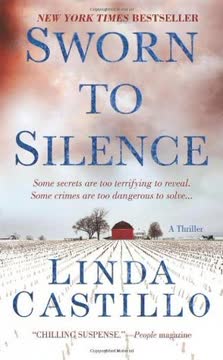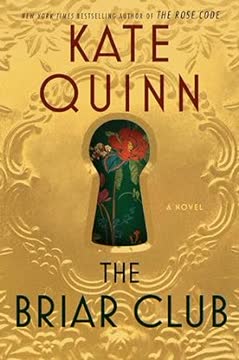Plot Summary
Amish Shadows Return
Painters Mill, Ohio, a town where Amish and English coexist, is rocked by the discovery of a brutally murdered young woman in the snow. The crime is shockingly violent, with the victim tortured, raped, and marked with a Roman numeral carved into her flesh. Chief of Police Kate Burkholder, herself formerly Amish, is called to the scene. The murder's brutality and the signature carving evoke memories of a series of unsolved killings from sixteen years ago, known as the Slaughterhouse Murders. The town's fragile peace is broken, and old fears resurface, especially for Kate, who carries her own secret scars from the past.
A Body in the Snow
Kate and her small, overworked police force begin the investigation, quickly realizing the murder is not an isolated incident. The victim is identified as Amanda Horner, a young woman from a nearby county. The crime scene is meticulously processed, but evidence is scarce. The killer's methods—restraint, torture, exsanguination, and the Roman numeral—mirror the old Slaughterhouse Killer's MO. Kate's own traumatic history with violence, and her unique position as a former Amish woman now leading the town's police, make her both an insider and outsider in the investigation. The Amish community is wary, and Kate's past complicates her relationships with both the Amish and the English.
Chief Burkholder's Secret Past
As the investigation deepens, Kate's nightmares return. Sixteen years ago, as a teenager, she was raped by Daniel Lapp, an Amish man, and killed him in self-defense. Her family covered up the crime, burying Lapp's body in secret. The Slaughterhouse Murders stopped after that, leading Kate to believe Lapp was the killer. Now, with a new murder bearing the same signature, Kate is tormented by the possibility that she killed the wrong man—or that Lapp somehow survived. Her secret weighs heavily, threatening her career and her sense of self.
The Slaughterhouse Murders
Kate reviews the old case files: four women, all tortured, exsanguinated, and marked with Roman numerals. The killer's knowledge of slaughterhouse techniques and the lack of forensic evidence stymied the original investigation. The town's collective memory of the murders is raw, and the return of the signature MO sends shockwaves through the community. Kate's own family was nearly destroyed by the violence of the past, and the new murder forces her to confront the possibility that the original killer was never caught.
The First Victim's Family
Kate must deliver the devastating news to Amanda Horner's family, a task that underscores the human cost of the crime. The pain and outrage of Amanda's parents, and the fear that the killer will strike again, galvanize the town. Kate's empathy and determination are tested as she tries to comfort the family while pushing the investigation forward. The emotional toll of the job, and the pressure from the town council and media, begin to mount.
The Old Wound Reopens
Haunted by the similarities between the new murder and the old ones, Kate seeks out her estranged Amish family. She and her brother attempt to locate Lapp's hidden grave, desperate to confirm he is dead and not the killer. The search is fraught with emotional pain, dredging up old resentments and guilt. Kate's relationship with her family is strained by the secrets they share, and the possibility that their silence allowed a killer to go free.
The Copycat or the Killer
The investigation stalls as Kate and her team chase leads: ex-boyfriends, bar patrons, and local troublemakers. The town council, fearing for the town's reputation and economy, pressures Kate for results and brings in outside help. Theories abound—could this be a copycat, or did the original killer return? The killer's escalating violence and the discovery of more bodies increase the urgency. Kate's authority is undermined by political maneuvering, and her job is threatened.
The Outsider Arrives
John Tomasetti, a troubled state investigator with his own tragic past, is assigned to assist. He and Kate form a wary partnership, both scarred by trauma and loss. Tomasetti's profiling expertise and outsider perspective help refocus the investigation. Together, they begin to see patterns others missed, and their mutual respect—and attraction—grows. But the killer remains elusive, and the town's suspicion and fear intensify.
The Town Turns
Under mounting pressure, the town council suspends Kate, blaming her for the lack of progress and the continued killings. Detrick, the charismatic county sheriff, takes over the case. Evidence is found at the farm of Jonas Hershberger, a reclusive Amish man, and he is arrested. Kate, convinced of Jonas's innocence, is forced to investigate from the outside, relying on Tomasetti and her loyal officers. The town's faith in its institutions is shaken, and Kate's sense of purpose is nearly destroyed.
The Wrong Man
Jonas Hershberger attempts suicide in jail, further convincing Kate of his innocence. She uncovers evidence that the real killer is manipulating the investigation and planting evidence. Her research into similar murders across the country reveals a chilling pattern: the same signature killings occurred in every place Sheriff Detrick lived and worked. The realization that the killer is a respected lawman is almost too much to bear.
The Real Monster Revealed
Kate confronts the horrifying truth: Sheriff Detrick is the Slaughterhouse Killer. His knowledge of police procedure, his access, and his ability to manipulate evidence allowed him to evade suspicion for decades. As Kate closes in, Detrick kidnaps her, intending to make her his next victim and frame her death as a suicide. Bound and helpless, Kate faces the same terror as the killer's other victims, but her will to survive is fierce.
The Final Confrontation
In a harrowing climax, Kate fights back against Detrick, using every ounce of her training and determination. Tomasetti, racing against time and a blizzard, tracks them to an abandoned farmhouse. In a violent confrontation, Tomasetti shoots Detrick, saving Kate's life. The killer is finally unmasked, and the town's nightmare ends. Kate survives, but the scars—physical and emotional—remain.
Healing and Homecoming
With Detrick's crimes exposed, Kate is reinstated as chief. The town begins to heal, and Kate's relationships—with her family, her officers, and Tomasetti—are mended. She finds a measure of peace, accepting her past and the choices she made. The Amish and English communities begin to rebuild trust. Kate and Tomasetti, both wounded but resilient, look toward the future, finding solace in each other and in the work that gives their lives meaning.
Characters
Kate Burkholder
Kate is the chief of police in Painters Mill, a woman who left the Amish community after a traumatic adolescence. Her past is marked by violence: raped at fourteen by Daniel Lapp, she killed him in self-defense, a secret her family helped bury. This trauma shapes her identity, making her both an insider and outsider in the town she serves. Kate is fiercely competent, empathetic, and driven by a need for justice, but she is also plagued by guilt and self-doubt. Her journey is one of confronting the past, protecting her community, and ultimately, forgiving herself.
John Tomasetti
A state investigator sent to assist with the case, Tomasetti is a man haunted by the murder of his own family. His pain manifests in substance abuse and a reputation for being difficult, but beneath the surface he is a brilliant detective and a deeply moral man. His partnership with Kate is transformative for both, as they find in each other a kindred spirit. Tomasetti's outsider status allows him to see what others miss, and his willingness to break rules is crucial in solving the case.
Nathan Detrick
The Holmes County sheriff, Detrick is a pillar of the community—outwardly. In reality, he is the Slaughterhouse Killer, a sociopath who has evaded detection for decades by hiding behind his badge. Intelligent, manipulative, and utterly remorseless, Detrick exploits his position to commit and cover up his crimes. His double life is a chilling commentary on the dangers of unchecked authority and the darkness that can hide in plain sight.
Jonas Hershberger
A reclusive Amish man, Jonas becomes the prime suspect when evidence is planted on his farm. His arrest and suicide attempt highlight the community's vulnerability and the ease with which outsiders can be targeted. Jonas's innocence is a testament to the dangers of prejudice and the importance of looking beyond appearances.
Glock Maddox
Kate's most trusted officer, Glock is a former Marine and the backbone of the Painters Mill PD. He is loyal, competent, and unflappable, providing both comic relief and emotional support. Glock's faith in Kate never wavers, and his presence is a stabilizing force throughout the investigation.
Mona Kurtz
The department's dispatcher, Mona is young, enthusiastic, and deeply invested in the case. Her quick thinking and dedication make her an invaluable asset, and her loyalty to Kate is unwavering. Mona represents the next generation of law enforcement, blending old-fashioned grit with modern savvy.
The Amish Community
The Amish of Painters Mill are both a backdrop and a central character in the story. Their traditions, values, and reluctance to engage with the English world create both obstacles and opportunities in the investigation. The community's response to violence, and its relationship with Kate, highlight themes of forgiveness, secrecy, and the cost of isolation.
The Town Council (Norm Johnston, Janine Fourman, Auggie Brock)
The town's leaders are more concerned with reputation and tourism than justice. Their interference, driven by fear and self-preservation, undermines Kate's authority and nearly derails the investigation. Their actions serve as a critique of small-town politics and the dangers of prioritizing image over truth.
Sarah and Jacob Burkholder
Kate's siblings, still Amish, are both a source of pain and a path to healing. Their shared secret binds them, but also drives them apart. The process of confronting the past and seeking forgiveness is central to Kate's personal journey.
Amanda Horner, Ellen Augspurger, Brenda Johnston
The murdered women are more than just victims; their lives and deaths drive the narrative and force the community to confront its darkest fears. Their stories are a reminder of the human cost of violence and the importance of justice.
Plot Devices
Dual Timelines and Secrets
The novel's structure weaves together the present-day investigation with flashbacks and revelations from Kate's past. The secret of Daniel Lapp's death, and the Burkholder family's cover-up, create a ticking time bomb that threatens to destroy Kate's career and credibility. This duality—public investigation and private guilt—drives the narrative tension and deepens the psychological complexity.
The Red Herring and False Accusation
The arrest of Jonas Hershberger, based on planted evidence, serves as a classic red herring. The real killer's manipulation of the investigation exposes the dangers of confirmation bias and the ease with which justice can be subverted. The device also critiques the tendency of communities to seek easy answers and scapegoats in times of crisis.
The Outsider's Perspective
John Tomasetti's arrival as an outsider—both to the town and to Kate's insular world—provides the necessary distance to see what others cannot. His profiling skills, and his willingness to question assumptions, are crucial in identifying the real killer. The outsider's role is a classic device for challenging groupthink and exposing hidden truths.
Escalation and Signature
The killer's use of Roman numerals, and the increasing brutality of the murders, signal both a compulsion and a desire for recognition. The signature serves as both a clue and a taunt, drawing the investigators into a psychological battle. The escalation raises the stakes and propels the narrative toward its climax.
The Final Girl and Survival
In the tradition of the "final girl" trope, Kate is captured by the killer and must use her wits, training, and will to survive. The climactic confrontation is both physical and psychological, forcing Kate to confront her deepest fears and traumas. Her survival is not just a victory over the killer, but a reclamation of agency and self-worth.
Analysis
Sworn to Silence is a masterful blend of psychological thriller, police procedural, and small-town drama, distinguished by its deep exploration of trauma, secrecy, and the search for justice. At its core, the novel is about the corrosive power of secrets—personal, familial, and communal—and the ways in which silence can both protect and destroy. Kate Burkholder's journey is emblematic of the struggle to reconcile past wounds with present responsibilities, and her resilience in the face of overwhelming odds is both inspiring and deeply human. The novel critiques the dangers of insularity, the failures of institutions, and the ease with which evil can hide in plain sight. Ultimately, Sworn to Silence is a story of survival, redemption, and the hard-won hope that comes from facing the truth, no matter how painful.
Last updated:
FAQ
0. Synopsis & Basic Details
What is Sworn to Silence about?
- Amish Past, Violent Present: Sworn to Silence plunges Chief of Police Kate Burkholder, a former Amish woman, into a brutal murder investigation in Painters Mill, Ohio, when a young woman is found tortured, raped, and marked with a Roman numeral, eerily mirroring a series of unsolved "Slaughterhouse Murders" from sixteen years prior.
- Haunted by Secrets: Kate's personal history is deeply intertwined with the past crimes; as a teenager, she killed an Amish man, Daniel Lapp, in self-defense after he raped her, and her family secretly buried his body, leading her to believe he was the original killer.
- Unmasking a Monster: As more victims appear and the town's fear escalates, Kate, aided by troubled state investigator John Tomasetti, races against time and political interference to uncover the true identity of the serial killer, forcing her to confront her own buried secrets and face a shocking betrayal from within the law enforcement community.
Why should I read Sworn to Silence?
- Deep Psychological Thriller: Readers seeking a gripping psychological thriller will be drawn to Kate Burkholder's complex character, her internal struggles with a traumatic past, and the moral dilemmas she faces while hunting a ruthless serial killer. The novel offers a profound exploration of trauma, guilt, and resilience.
- Unique Cultural Setting: The novel provides a fascinating glimpse into the Amish community, exploring the intricate dynamics between their insular world and modern society, and how cultural values impact justice and secrecy. This unique backdrop enriches the narrative beyond a typical police procedural.
- Intense, Twisty Plot: With its relentless pacing, shocking twists, and a chilling antagonist, Sworn to Silence keeps readers on the edge of their seats. The intricate layering of past and present crimes, combined with a compelling "whodunit" element, makes for an unforgettable reading experience.
What is the background of Sworn to Silence?
- Amish Country Setting: The novel is set in Painters Mill, Ohio, a fictional town in the heart of Ohio's Amish country. This geographical and cultural backdrop is central to the story, influencing character interactions, community dynamics, and the challenges of law enforcement in a dual society.
- Author's Research: Linda Castillo extensively researched Amish culture and police procedures to create an authentic and immersive experience. This dedication is evident in the detailed descriptions of Amish life, the nuances of their dialect (Pennsylvania Dutch), and the realistic portrayal of a small-town police department grappling with a major crime.
- Series Origin: Sworn to Silence is the first book in the Kate Burkholder series, establishing the protagonist's complex backstory and the unique premise of a former Amish police chief. The novel lays the groundwork for ongoing character development and thematic exploration in subsequent installments.
What are the most memorable quotes in Sworn to Silence?
- "I'm one of those writers lucky enough to have a strong support system that sustains me in the long, and sometimes difficult, months it takes to write a novel.": This quote from the acknowledgments, while not part of the narrative, is memorable for its meta-commentary on the creative process, subtly mirroring the "support system" Kate needs to navigate her own difficult journey. It highlights the unseen efforts behind creation, much like the hidden efforts behind solving a crime.
- "I dream of death. As always, I'm in the kitchen of the old farmhouse. Blood shimmers stark and red against the scuffed hardwood floor.": This recurring nightmare opening Chapter 2 is iconic for its visceral imagery and immediate plunge into Kate's deep-seated trauma. It powerfully establishes the central theme of how past violence haunts the present, making it a defining quote for Kate's psychological state.
- "You're a gun-toting, cursing, former Amish female chief of police. I'll be damned.": Spoken by John Tomasetti, this quote encapsulates Kate's unique and contradictory identity, highlighting her journey from a pacifist Amish upbringing to a tough, modern law enforcement officer. It's a memorable line that defines her transformation and the inherent irony of her character.
What writing style, narrative choices, and literary techniques does Linda Castillo use?
- Gritty, Immersive Prose: Linda Castillo employs a direct, unvarnished writing style that immerses the reader in the harsh realities of police work and the emotional landscape of her characters. Her descriptions are often sensory, focusing on smells, sounds, and tactile details to create a vivid and sometimes unsettling atmosphere, enhancing the psychological impact of the Sworn to Silence narrative.
- Dual Perspective & Internal Monologue: While primarily told from Kate's third-person limited perspective, the narrative occasionally shifts to the killer's chilling internal monologues and Tomasetti's cynical observations. This narrative choice deepens the psychological complexity, allowing readers insight into the antagonist's pathology and offering a contrasting "outsider's perspective" on Kate's world, enriching the Sworn to Silence analysis.
- Foreshadowing and Suspense Building: Castillo masterfully uses subtle foreshadowing and a relentless build-up of suspense. Seemingly minor details, like Detrick's past as a hunting guide or his bald head, gain sinister significance later, creating a sense of dread and anticipation that keeps the reader guessing about the killer's identity and the unfolding plot in Sworn to Silence.
1. Hidden Details & Subtle Connections
What are some minor details that add significant meaning?
- The Stray Tabby Cat's Appearance: The recurring presence of the scraggly orange tabby cat, particularly in Kate's moments of vulnerability and isolation (Chapter 11, 28, 29), subtly mirrors Kate's own character. Like the cat, Kate is a survivor, initially wary but capable of forming unexpected bonds, and often finds herself an "unwanted stray" in both the English and Amish worlds, adding a layer to Kate Burkholder's motivations.
- Detrick's Bald Head and Hunting Past: Early mentions of Sheriff Detrick's bald head (Chapter 14) and Glock's offhand comment about Detrick being a "big shot hunting guide in Alaska" (Chapter 24) are seemingly throwaway lines that later become crucial clues. The baldness hints at his body-shaving to avoid leaving DNA, while his hunting background connects to the killer's "exsanguination" MO, revealing the hidden depths of the Nathan Detrick character analysis.
- The Kitchen as a Site of Trauma: Kate's recurring nightmare always places her in the kitchen of her childhood home, a space traditionally associated with warmth and domesticity, but for her, it's stained with blood and terror (Chapter 2). This detail highlights the profound violation of her innocence and how trauma can corrupt even the most sacred spaces, offering a deeper Sworn to Silence symbolism of lost peace.
What are some subtle foreshadowing and callbacks?
- T.J.'s Initial Contamination of the Crime Scene: T.J. Banks's inexperience leads him to inadvertently contaminate the first crime scene by rolling the victim (Chapter 2). This early detail subtly foreshadows the killer's meticulousness in avoiding evidence and the challenges the small police force faces, making the later discovery of planted evidence (Jonas Hershberger) more plausible and highlighting the killer's cunning.
- Jacob's Unspoken Blame: Jacob's accusation, "I saw you smile at Daniel Lapp" (Chapter 9), is a devastating callback to Kate's past trauma, revealing the deep-seated, unspoken judgment within her own family. This moment foreshadows the emotional toll of her secrets and the difficulty of seeking support from those closest to her, adding depth to Kate Burkholder's psychological complexities.
- The Killer's Internal Monologue on Addiction: The killer's reflection, "He'd once been told he had an addictive personality... But killing, having that ultimate power over another human being, was something else altogether. An addiction more powerful than any narcotic" (Chapter 22), subtly foreshadows his escalating violence and his inability to stop. This internal detail provides a chilling insight into the serial killer's motivations and the compulsive nature of his crimes, a key element in themes in Sworn to Silence.
What are some unexpected character connections?
- Kate and Jonas Hershberger's Shared Childhood: Kate's unwavering belief in Jonas's innocence stems from a childhood memory of him saving kittens (Chapter 29). This unexpected connection highlights Kate's intuitive understanding of character, contrasting sharply with the circumstantial evidence. It underscores the theme that true nature can be hidden, but also that deep-seated kindness is hard to erase, offering a unique perspective on Jonas Hershberger's character.
- Detrick's Connection to Past Murders Beyond Ohio: The revelation that Sheriff Detrick "found" a body in Alaska and lived in other states where similar unsolved murders occurred (Chapter 31) creates a chilling, unexpected connection. This detail transforms him from a local authority figure into a long-undetected, geographically mobile serial killer, deepening the Nathan Detrick character analysis and the scope of the Sworn to Silence plot.
- Tomasetti's Empathy for Kate's Vigilantism: Despite his professional role, Tomasetti's own past of vigilante justice (killing his family's murderer, Vespian, and framing his partner) creates an unexpected bond and understanding with Kate's secret (killing Daniel Lapp). This shared moral ambiguity allows for a unique, unspoken connection and mutual support, enriching the John Tomasetti motivations and their evolving relationship dynamics in Sworn to Silence.
2. Psychological, Emotional, & Relational Analysis
What are some unspoken motivations of the characters?
- Kate's Drive for Exoneration: Beyond solving the murders, Kate is subconsciously driven by a desperate need to prove Daniel Lapp was the original killer, which would, in turn, exonerate her from the guilt of taking a life and validate her family's cover-up. This unspoken motivation fuels her initial reluctance to consider a copycat and her intense focus on the old case, a key aspect of Kate Burkholder's motivations.
- Detrick's Need for Control and Recognition: Sheriff Detrick's decision to become a police officer and later sheriff, while secretly being a serial killer, is motivated by a profound need for control and recognition. His position grants him access, authority, and the ability to manipulate investigations, satisfying his ego and sense of power, which is a chilling insight into Nathan Detrick's psychological complexities.
- The Town Council's Fear of Economic Ruin: The town council's aggressive actions against Kate, including bringing in outside help and ultimately firing her, are primarily motivated by an unspoken fear of economic collapse due to negative publicity. Their concern for tourism outweighs their immediate pursuit of justice, revealing the underlying self-interest and vulnerability of the community in themes in Sworn to Silence.
What psychological complexities do the characters exhibit?
- Kate's Survivor's Guilt and Identity Crisis: Kate grapples with profound survivor's guilt, not only from her rape but also from the act of killing Daniel Lapp, which clashes with her Amish pacifist upbringing. This creates an ongoing identity crisis, where her role as a law enforcer is constantly at odds with her past, making her a deeply complex protagonist in Sworn to Silence character analysis.
- Tomasetti's Self-Destructive Coping Mechanisms: John Tomasetti exhibits classic signs of PTSD, manifesting in substance abuse (alcohol and pills), cynicism, and a self-destructive streak. His psychological complexity lies in his struggle to reconcile his past trauma and vigilante actions with his professional ethics, making his journey toward healing a significant part of John Tomasetti's psychological complexities.
- Detrick's High-Functioning Psychopathy: Nathan Detrick is a chilling example of a high-functioning psychopath. He maintains a charismatic public persona as a respected lawman, husband, and father, while secretly harboring a sadistic compulsion to torture and kill. His ability to compartmentalize and manipulate makes him a terrifyingly complex villain, central to the serial killer's psychological profile in Sworn to Silence.
What are the major emotional turning points?
- Discovery of Daniel Lapp's Remains: The moment Kate and Jacob unearth Daniel Lapp's skeletal remains in the grain elevator (Chapter 25) is a pivotal emotional turning point. It shatters Kate's long-held belief that Lapp was the killer, forcing her to confront the possibility that she killed an innocent man (or at least not the serial killer) and deepening her guilt, profoundly impacting Kate Burkholder's emotional journey.
- Kate's Confession to Tomasetti: Kate's raw, tearful confession to John Tomasetti about killing Daniel Lapp (Chapter 26) marks a significant emotional release and a turning point in their relationship. This act of vulnerability, sharing her deepest secret, allows for a profound connection and mutual understanding, initiating a path toward healing for both characters and evolving their relationship dynamics in Sworn to Silence.
- Norm Johnston's Outburst and Kate's Termination: Norm Johnston's grief-fueled accusation that Kate's incompetence led to his daughter's death, followed by her termination (Chapter 23, 27), is a major emotional blow. This public humiliation and professional betrayal push Kate to her lowest point, but also galvanize her resolve to uncover the truth, highlighting her resilience and determination in themes in Sworn to Silence.
How do relationship dynamics evolve?
- Kate and Tomasetti: From Wary Colleagues to Intimate Allies: Their relationship evolves from a wary, professional partnership, marked by initial distrust and territoriality, into a deep, intimate bond. Their shared experiences of trauma and moral ambiguity create a unique understanding, culminating in physical intimacy and mutual support, transforming their relationship dynamics into a central element of Sworn to Silence character analysis.
- Kate and Her Amish Family: Strained Secrecy to Fragile Reconciliation: Kate's relationship with her siblings, Jacob and Sarah, is initially strained by the shared secret of Lapp's death and the Amish practice of shunning. The crisis forces them to confront old resentments and unspoken blame, leading to a fragile, yet hopeful, reconciliation as they acknowledge their shared past and begin to rebuild trust, exploring family dynamics in Sworn to Silence.
- Kate and the Town Council: Political Conflict to Earned Respect: The dynamic between Kate and the town council, particularly Norm Johnston and Janine Fourman, shifts from one of political maneuvering and distrust to grudging respect. Her termination and subsequent vindication by exposing Detrick force the council to acknowledge her competence and integrity, demonstrating the power of truth over political expediency in Sworn to Silence themes.
4. Interpretation & Debate
Which parts of the story remain ambiguous or open-ended?
- The Full Extent of Daniel Lapp's Crimes: While Kate is exonerated from being the serial killer, the story leaves ambiguous whether Daniel Lapp was a serial rapist or if Kate was his only victim. The high percentage of unreported sexual assaults, especially in insular communities, suggests he may have had other victims, leaving a lingering question about the true nature of the man Kate killed, a point for Sworn to Silence interpretation.
- The Long-Term Impact of Kate's Trauma: Despite finding justice and beginning a relationship with John, the novel leaves open the long-term psychological impact of Kate's multiple traumas (rape, killing Lapp, the cover-up, her abduction by Detrick). The doctor's assurance that nightmares "would fade with time" (Chapter 37) is hopeful but not definitive, suggesting an ongoing journey of healing for Kate Burkholder's psychological complexities.
- The Future of Kate and John's Relationship: The ending offers a hopeful beginning for Kate and John's relationship, but its long-term viability remains open-ended. Both characters carry significant baggage and trauma, and their connection is still nascent. The question of whether their shared understanding can sustain a healthy relationship, or if their individual demons will resurface, is left for future interpretation in Sworn to Silence.
What are some debatable, controversial scenes or moments in Sworn to Silence?
- The Family's Cover-Up of Daniel Lapp's Death: The decision by Kate's Amish family to cover up Daniel Lapp's murder, burying his body in secret (Chapter 5), is highly controversial. Readers may debate the morality of this act: was it a necessary protection for a traumatized fourteen-year-old girl and her family, or a grave injustice that allowed a potential serial killer to remain uninvestigated for years? This scene sparks debate on Amish community values versus legal and ethical obligations.
- John Tomasetti's Vigilante Justice: John Tomasetti's confession of torturing and burning his family's murderer, Con Vespian, and then framing Vespian's partner (Chapter 30), is a deeply controversial moment. This act of vigilante justice challenges the boundaries of law enforcement ethics and raises questions about whether his actions, though driven by unimaginable grief, were justifiable or simply another form of criminality, central to John Tomasetti's motivations and Sworn to Silence themes.
- Kate's Initial Reluctance to Seek Outside Help: Kate's delay in calling for assistance from state or federal agencies, driven by her secret about Daniel Lapp and the town council's political pressure (Chapter 6, 7), is a debatable decision. Some readers might view it as a dereliction of duty that potentially allowed more victims to die, while others might empathize with her impossible position, caught between personal secrets and professional responsibility, fueling debate on Kate Burkholder's leadership and Sworn to Silence plot points.
Sworn to Silence Ending Explained: How It Ends & What It Means
- The Killer Unmasked and Captured: The ending of Sworn to Silence reveals Sheriff Nathan Detrick as the true "Slaughterhouse Killer." Kate, having pieced together the evidence of his past crimes across multiple states, confronts him. Detrick kidnaps Kate, intending to make her his final victim and stage her death as a suicide. John Tomasetti, alerted by Kate, tracks them to an abandoned farmhouse and shoots Detrick, saving Kate's life. Detrick survives and is arrested, confessing to dozens of murders over 25 years. This provides a definitive Sworn to Silence ending explained for the central mystery.
- Kate's Reinstatement and Personal Healing: Kate is reinstated as Chief of Police, her integrity and competence vindicated. The discovery of Daniel Lapp's remains confirms he was not the serial killer, alleviating Kate's long-held guilt, though the trauma of her past and recent abduction lingers. Her relationship with her family begins
Review Summary
Sworn to Silence is a gripping thriller set in Amish country, featuring Kate Burkholder, a former Amish woman now serving as police chief. The novel explores dark themes of serial killings and past secrets, with graphic violence that some readers found disturbing. Many praised the complex characters, especially Kate, and the unique Amish setting. The plot twists and suspense kept readers engaged, though some criticized predictable romance elements. Overall, reviewers found it a compelling start to the series, with most eager to continue reading despite the intense subject matter.
Similar Books
Download PDF
Download EPUB
.epub digital book format is ideal for reading ebooks on phones, tablets, and e-readers.















